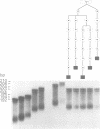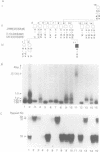Abstract
Fragile X (fra(X)) syndrome, the most common form of familial mental retardation, is caused by heritable unstable DNA composed of CGG repeats. As reproductive fitness of fra(X) patients is severely compromised, a high mutation rate has been proposed to explain the high prevalence. However, we have been unable to show any new mutation for 84 probands referred to us to date. We show here the same fra(X) gene in five fra(X) probands with common ancestors married in 1747. The lack of new fra(X) mutations implies that there must be many more fra(X) gene carriers in the population than previously realised. As it is now possible to detect asymptomatic fra(X) gene carriers by DNA analysis, extended family studies for any new proband are recommended. A family illustrating the importance of fra(X) carriership determination is reported.
Full text
PDF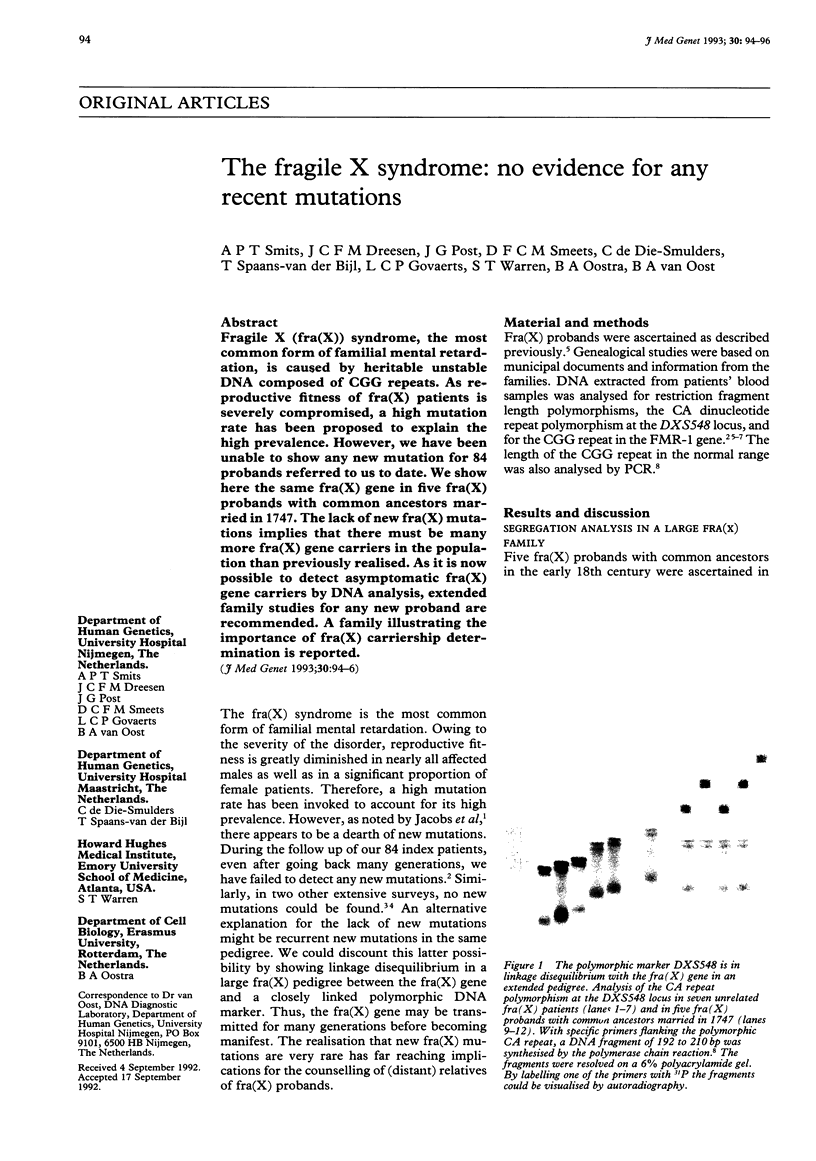
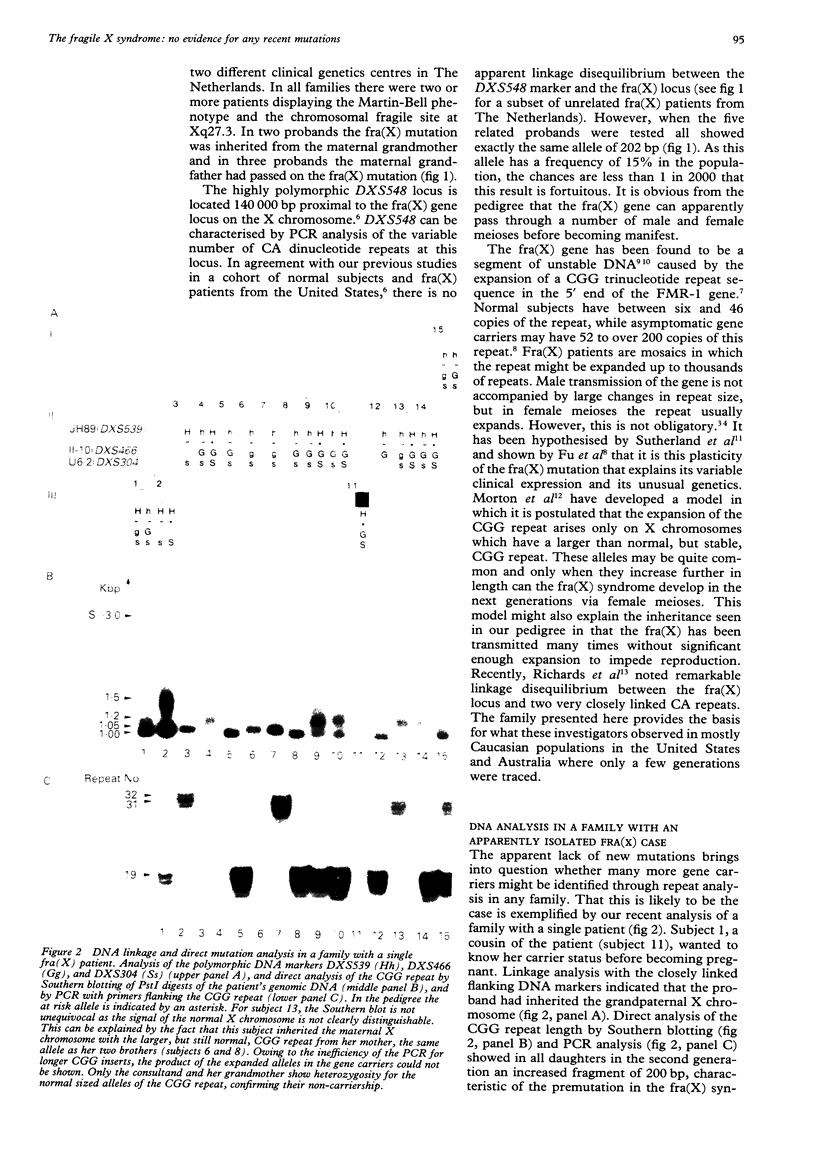
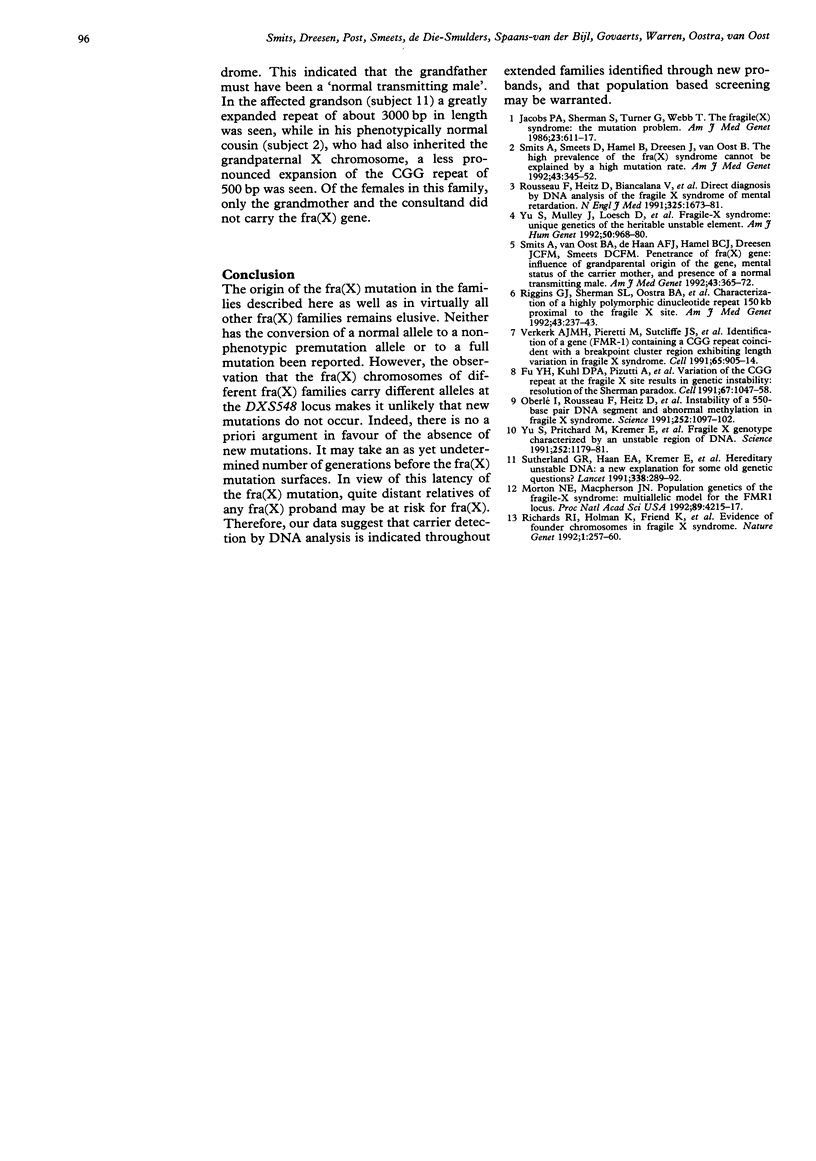
Images in this article
Selected References
These references are in PubMed. This may not be the complete list of references from this article.
- Fu Y. H., Kuhl D. P., Pizzuti A., Pieretti M., Sutcliffe J. S., Richards S., Verkerk A. J., Holden J. J., Fenwick R. G., Jr, Warren S. T. Variation of the CGG repeat at the fragile X site results in genetic instability: resolution of the Sherman paradox. Cell. 1991 Dec 20;67(6):1047–1058. doi: 10.1016/0092-8674(91)90283-5. [DOI] [PubMed] [Google Scholar]
- Morton N. E., Macpherson J. N. Population genetics of the fragile-X syndrome: multiallelic model for the FMR1 locus. Proc Natl Acad Sci U S A. 1992 May 1;89(9):4215–4217. doi: 10.1073/pnas.89.9.4215. [DOI] [PMC free article] [PubMed] [Google Scholar]
- Richards R. I., Holman K., Friend K., Kremer E., Hillen D., Staples A., Brown W. T., Goonewardena P., Tarleton J., Schwartz C. Evidence of founder chromosomes in fragile X syndrome. Nat Genet. 1992 Jul;1(4):257–260. doi: 10.1038/ng0792-257. [DOI] [PubMed] [Google Scholar]
- Rousseau F., Heitz D., Biancalana V., Blumenfeld S., Kretz C., Boué J., Tommerup N., Van Der Hagen C., DeLozier-Blanchet C., Croquette M. F. Direct diagnosis by DNA analysis of the fragile X syndrome of mental retardation. N Engl J Med. 1991 Dec 12;325(24):1673–1681. doi: 10.1056/NEJM199112123252401. [DOI] [PubMed] [Google Scholar]
- Smits A. P., van Oost B. A., de Haan A. F., Hamel B. C., Dreesen J. C., Smeets D. F. Penetrance of fra(X) gene: influence of grandparental origin of the gene, mental status of the carrier mother, and presence of a normal transmitting male. 1992 Apr 15-May 1Am J Med Genet. 43(1-2):365–372. doi: 10.1002/ajmg.1320430157. [DOI] [PubMed] [Google Scholar]
- Smits A., Smeets D., Hamel B., Dreesen J., van Oost B. High prevalence of the fra(X) syndrome cannot be explained by a high mutation rate. 1992 Apr 15-May 1Am J Med Genet. 43(1-2):345–352. doi: 10.1002/ajmg.1320430153. [DOI] [PubMed] [Google Scholar]
- Sutherland G. R., Haan E. A., Kremer E., Lynch M., Pritchard M., Yu S., Richards R. I. Hereditary unstable DNA: a new explanation for some old genetic questions? Lancet. 1991 Aug 3;338(8762):289–292. doi: 10.1016/0140-6736(91)90426-p. [DOI] [PubMed] [Google Scholar]
- Verkerk A. J., Pieretti M., Sutcliffe J. S., Fu Y. H., Kuhl D. P., Pizzuti A., Reiner O., Richards S., Victoria M. F., Zhang F. P. Identification of a gene (FMR-1) containing a CGG repeat coincident with a breakpoint cluster region exhibiting length variation in fragile X syndrome. Cell. 1991 May 31;65(5):905–914. doi: 10.1016/0092-8674(91)90397-h. [DOI] [PubMed] [Google Scholar]
- Yu S., Mulley J., Loesch D., Turner G., Donnelly A., Gedeon A., Hillen D., Kremer E., Lynch M., Pritchard M. Fragile-X syndrome: unique genetics of the heritable unstable element. Am J Hum Genet. 1992 May;50(5):968–980. [PMC free article] [PubMed] [Google Scholar]



